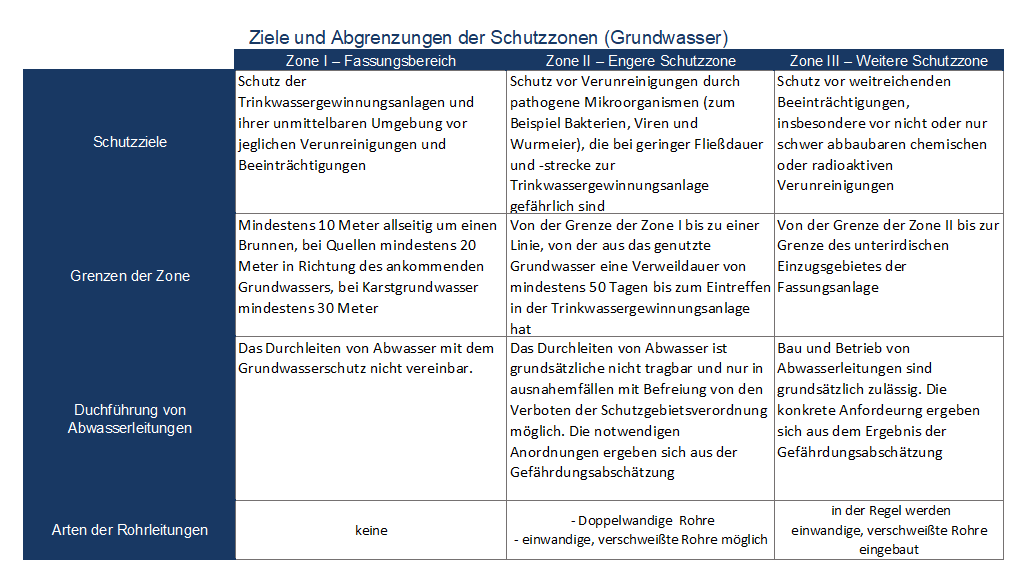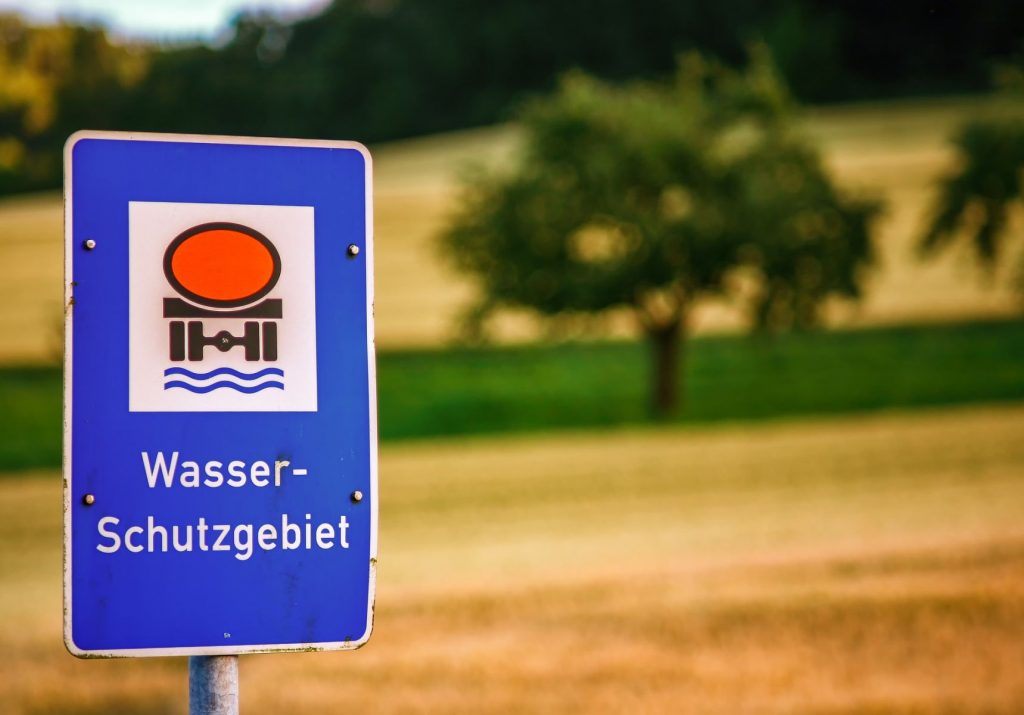Drinking water production and water protection areas
The Water Resources Act opens up the possibility of establishing water protection areas in which certain actions can be prohibited or declared permissible only to a limited extent in the interest of the currently existing and future water supply.
As a matter of principle, sewers and pipelines must be constructed and operated in such a way that harmful contamination and adverse changes to the groundwater are not to be feared. Water protection areas play a special role due to their importance. The normal requirements are not sufficient here.
For the construction of wastewater plants in water protection areas, the legal requirements result from the Water Resources Act (WHG) as well as the technical planning principles from the DVGW worksheet W 101 and DWA-A 142. This describes the necessary precautions to protect the environment as much as possible.
The size and location of the protection zones is determined on a case-by-case basis according to local hydrogeological conditions. The further protection zone (Zone III) serves to protect against far-reaching impairments, in particular against chemical or radioactive contamination. In the narrower protection zone (zone II) is also intended to prevent bacterial contamination. The barrel area (zone I) is intended to provide additional protection against immediate hazards.
The division and handling of the different zones should be considered as follows:
SABUG offers innovative solutions for wastewater plants in drinking water protection areas that can significantly increase groundwater protection. By welding the pipelines, manholes and attachments and using double-walled tanks and tank systems, harmful explosions and infiltrations can be safely prevented for decades.
Products
- IP-plus DIN EN 14758
(for the KG 2000 pipe system) - IP-plus DIN EN 1852
(for the ACARO PP SN 12/16 pipe system) - Sabug container systems
- Sedimentation systems
- Foundation pipes
- Monitoring systems
- Pump technology
- Inlets
- Swelling seals
- Syphon shafts
- T-pieces
- Other components



